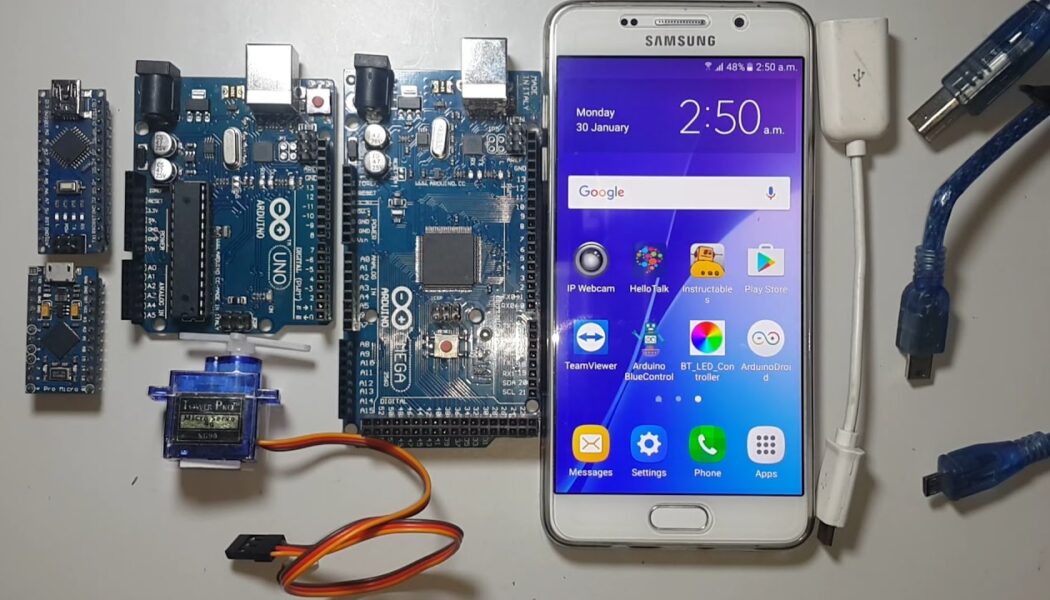The combination of Arduino and Android has opened up a world of possibilities for tech enthusiasts, hobbyists, and developers alike. These two platforms—Arduino, an open-source electronics platform, and Android, the most widely used mobile operating system—offer a seamless way to create innovative projects that integrate hardware and software. Whether you’re a beginner looking to experiment with simple projects or an experienced developer aiming to build complex systems, the synergy between Arduino and Android can help you bring your ideas to life.
What is Arduino?
Arduino 1 sheeld is an open-source electronics platform based on easy-to-use hardware and software. It consists of a microcontroller (a small computer on a single integrated circuit) and an integrated development environment (IDE) that allows users to write and upload code to the physical board. Arduino boards can read inputs—such as light from a sensor, a finger on a button, or a Twitter message—and turn them into outputs, such as activating a motor, turning on an LED, or publishing something online.
Arduino android is highly popular in the maker community because of its simplicity, flexibility, and vast ecosystem of sensors, shields, and libraries. It allows users to create interactive electronic projects without requiring extensive knowledge of electronics or programming.
What is Android?
Android is a mobile operating system developed by Google, based on the Linux kernel and designed primarily for touchscreen mobile devices such as smartphones and tablets. With its open-source nature, Android provides developers with a flexible platform to create applications, including those that can interact with hardware through Bluetooth, Wi-Fi, and other communication protocols.
Android’s popularity and extensive developer community have resulted in a vast array of apps and tools that can be used in conjunction with Arduino to build projects that merge the physical and digital worlds.
Integrating Arduino with Android
The integration of Arduino and Android opens up a myriad of possibilities for creating smart devices and IoT (Internet of Things) projects. Here are some common ways to connect Arduino with Android:
1. Bluetooth Communication
One of the most popular ways to connect an Arduino to an Android device is through Bluetooth. Bluetooth modules like the HC-05 or HC-06 can be connected to the Arduino board, allowing it to communicate wirelessly with an Android app. This setup is ideal for creating projects like remote-controlled cars, home automation systems, or wearable devices.
Developers can use Android Studio to create custom apps that send and receive data from the Arduino via Bluetooth. For example, you can create an app that controls the speed and direction of a motor connected to an Arduino, or one that reads sensor data from the Arduino and displays it on the Android device.
2. Wi-Fi Communication
Another common method is to use Wi-Fi to connect Arduino and Android. Wi-Fi modules like the ESP8266 or the more powerful ESP32 can be integrated with Arduino to enable wireless communication. This approach is particularly useful for IoT projects where the Arduino device needs to be controlled or monitored remotely.
Using Wi-Fi, you can create an Android app that sends commands to the Arduino over a local network or the internet. For instance, you could build a home automation system that allows you to control lights, appliances, or security systems from your Android smartphone, even when you’re not at home.
3. USB Communication
For projects that require a wired connection, you can use a USB cable to connect your Arduino directly to an Android device. This method is straightforward and reliable, making it ideal for projects where the Android device and Arduino are in close proximity.
Using USB, you can develop Android apps that communicate with the Arduino via the USB port. For example, you can create a data logging system where sensor data from the Arduino is collected and displayed on the Android device in real-time.
Applications and Projects
The combination of Arduino and Android can be used to build a wide variety of projects, ranging from simple to complex. Some examples include:
- Home Automation: Control your home’s lighting, heating, and security systems through an Android app connected to an Arduino-powered system.
- Wearable Technology: Create smart wearables that monitor health metrics and sync data with an Android app.
- Robotics: Build robots that can be controlled via Bluetooth or Wi-Fi using an Android device.
- Environmental Monitoring: Develop systems that collect data from sensors (e.g., temperature, humidity, air quality) and display it on an Android app.
Conclusion
The integration of Arduino and Android offers endless possibilities for creating innovative projects that bridge the gap between hardware and software. Whether you’re looking to build simple gadgets or complex IoT systems, these platforms provide the tools and flexibility to turn your ideas into reality. By leveraging the power of Arduino’s open-source hardware and Android’s versatile software environment, you can develop solutions that enhance everyday life and push the boundaries of what’s possible in technology.
